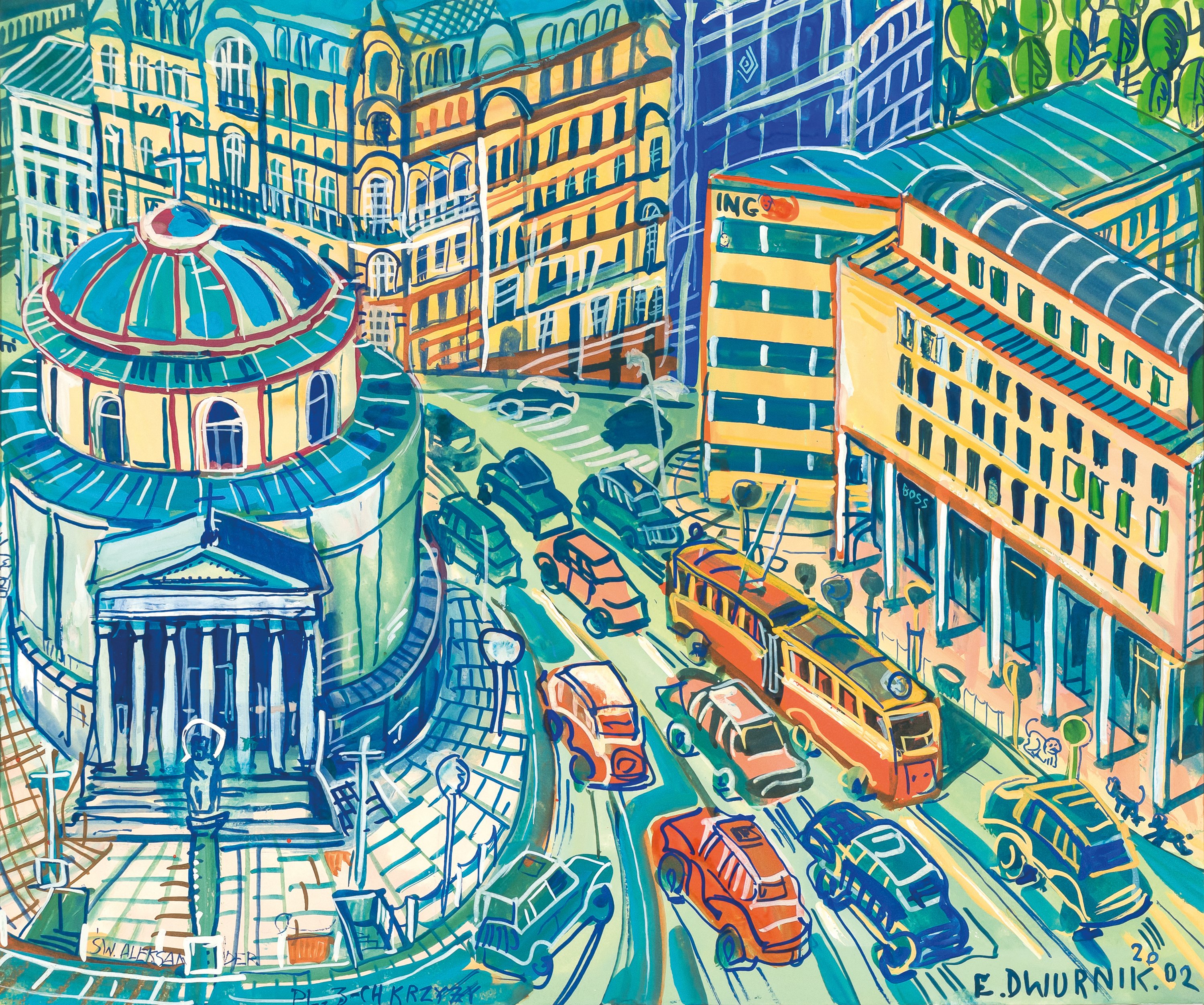Edward Dwurnik
Three Crosses Square
FSP ING 0037
A painting by Edward Dwurnik from his most recognised bird’s-eye-view cityscape series, mainly in two colours, green and red. His cityscape paintings are packed with buildings, monuments to well-known persons, and national and religious symbols juxtaposed with ordinary banal situations. Three Crosses Square depicts the area around St. Alexander’s Church and the Holland Park building, the original Warsaw premises of ING Bank Śląski, where part of the Foundation’s collection was displayed. Pedestrians have been replaced with perambulating lions.
Edward Dwurnik
b. 1943, Radzymin – d. 2018, Warsaw
Painter and draughtsman. A painting and graphic arts graduate of the Academy of Fine Arts in Warsaw, he was one of the most vibrant characters on the Polish art scene, with a presence in popular and mainstream culture. To Dwurnik, Nikifor Krynicki was the most important artist and inspiration in the choice of themes, working methods, and style. Dwurnik’s oeuvre, ironic and grotesque, chiefly includes expansive painting cycles, rendered with a fine paintbrush in semblance of Nikifor, with recurrent social, political, and social drama motifs, produced in multiple copies, often simultaneously. His bird’s-eye-view cityscapes created over a number of decades from the mid-1960s are the cycle he is best known for. He painted his first set of abstract paintings, which he called “pollocks”, in the early 2000s. He participated in Documenta 7 in Kassel in 1982. Winner of numerous awards, including the Cyprian Kamil Norwid Award (1981) and the Coutts Contemporary Art Foundation Award (1992). He lived and worked in Warsaw.
b. 1943, Radzymin – d. 2018, Warsaw
Painter and draughtsman. A painting and graphic arts graduate of the Academy of Fine Arts in Warsaw, he was one of the most vibrant characters on the Polish art scene, with a presence in popular and mainstream culture. To Dwurnik, Nikifor Krynicki was the most important artist and inspiration in the choice of themes, working methods, and style. Dwurnik’s oeuvre, ironic and grotesque, chiefly includes expansive painting cycles, rendered with a fine paintbrush in semblance of Nikifor, with recurrent social, political, and social drama motifs, produced in multiple copies, often simultaneously. His bird’s-eye-view cityscapes created over a number of decades from the mid-1960s are the cycle he is best known for. He painted his first set of abstract paintings, which he called “pollocks”, in the early 2000s. He participated in Documenta 7 in Kassel in 1982. Winner of numerous awards, including the Cyprian Kamil Norwid Award (1981) and the Coutts Contemporary Art Foundation Award (1992). He lived and worked in Warsaw.
